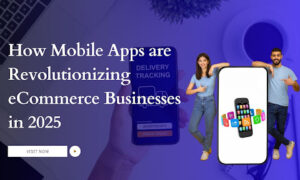In this era of digital transformation, enterprise mobile applications are revolutionizing how businesses operate, driving unprecedented levels of efficiency, productivity, and user engagement. As organizations shift toward mobile-first strategies, these apps are becoming vital tools for achieving operational excellence. Sai Krishna Paladugu, a distinguished expert in enterprise software development, unveils innovative methodologies to build native mobile applications that prioritize security, optimize performance, scale effortlessly, integrate seamlessly, and maintain regulatory compliance, empowering businesses to thrive in today’s fast-evolving technological landscape.
Security: Safeguarding Sensitive Data
Security forms the bedrock of enterprise mobile applications, given their role in handling sensitive and proprietary data critical to business operations. Advanced encryption methods, such as AES-256, provide robust protection by safeguarding data both at rest and during transit, adhering to stringent industry standards. Complementing encryption, regular key rotation and dedicated management tools add another layer of defense, effectively minimizing potential risks.
Multi-factor authentication (MFA) further strengthens security by combining passwords, security tokens, and biometric verification, making it highly resistant to automated attacks. Additionally, sandboxing techniques ensure that app access to device resources is tightly controlled, limiting potential breaches. Together, these practices reinforce trust in mobile solutions while addressing the heightened security demands of enterprises.
Optimizing Performance for Seamless Experiences
A high-performing app is crucial for ensuring user engagement and maximizing productivity. By leveraging platform-specific native SDKs and APIs, enterprise apps achieve superior responsiveness, operating 15–20% faster than hybrid alternatives. Techniques like lazy loading significantly reduce initial load times, while background data synchronization and smart caching enhance performance, even in low-connectivity scenarios.
Offline capabilities elevate user experiences further, enabling uninterrupted productivity regardless of network conditions. Incremental data syncing and conflict resolution frameworks ensure seamless transitions between offline and online states, preventing data loss or inconsistencies. These performance enhancements improve user satisfaction and drive greater adoption and long-term success for enterprise mobile applications.
Scalability: Designing for Future Growth
Enterprise apps must adapt to growing user bases and dynamic business demands. A modular architecture, paired with microservices and containerization, enables features to scale independently without compromising overall performance. Cloud-native approaches, including serverless computing, dynamically allocate resources, reducing operational costs and improving resilience.
Continuous integration and delivery (CI/CD) pipelines streamline app updates and feature rollouts. Strategies like feature flags and blue-green deployments minimize downtime during updates. By embedding scalability into app design, enterprises can future-proof their solutions and reduce long-term maintenance costs.
Seamless Integration with Enterprise Systems
The average enterprise relies on hundreds of interconnected applications, making seamless integration a priority for mobile app development. APIs facilitate smooth data flow across systems, with RESTful APIs providing interoperability and GraphQL enhancing efficiency by reducing data transfer loads.
Robust API management platforms improve governance and operational efficiency, while API versioning ensures backward compatibility, reducing disruptions during updates. Custom configurations tailored to roles or departments enhance flexibility, while multi-tenancy supports resource-efficient scalability. These integration strategies maximize the value of existing systems while simplifying workflows.
Automation and Compliance for Sustained Quality
Maintaining high-quality apps requires rigorous testing and strict adherence to compliance standards. Automated testing, powered by AI, reduces execution time and increases test coverage, identifying bugs early in the development cycle. This includes unit, integration, and performance testing, ensuring that apps function reliably across scenarios.
Compliance with data protection regulations like GDPR and HIPAA is equally critical. Privacy-by-design principles, automated auditing tools, and encryption protocols safeguard data and maintain adherence to regulatory requirements. These practices minimize risks and demonstrate an organization’s commitment to ethical data handling.
The Power of a Mobile-First Strategy
The enterprise mobile app landscape is rapidly evolving, driven by a shift toward remote work, real-time data access, and digitized processes. By prioritizing security, performance, scalability, integration, and compliance, businesses can harness the transformative potential of mobile technology. These strategies not only address current challenges but also position enterprises for sustained success.
In conclusion, Sai Krishna Paladugu emphasizes, organizations that adopt innovative methodologies in app development will lead the way in operational excellence and digital transformation. By building robust, scalable, and secure mobile applications, they can unlock new avenues for growth and resilience in an ever-changing business landscape.



































